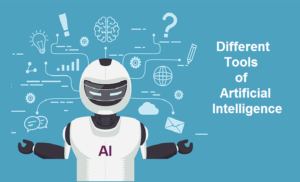“Agriculture is one of the world’s most crucial industries, and cereal grains are a vital crop.”
Between human consumption, animal feed and serving as a feedstock for other resources, cereals play a critical role in life and industry. Therefore, protecting them is essential for the economy and for ensuring the health of many.
Mycotoxins present a significant threat to cereals. The fusarium mycotoxin, in particular, has become an increasingly pressing issue, but artificial intelligence (AI) may help. Broader AI implementation could mitigate current infections and prevent future ones. Here’s how AI can aid in keeping food supplies safe.
What Is the Fusarium Mycotoxin?
Mycotoxins are a kind of contaminant from fungus and are toxic to humans and animals. About 60%-80% of crops worldwide have some level of mycotoxin contamination, with 20% of these infections exceeding food safety limits.
Fusarium is a class of mycotoxin affecting cereals like wheat and oats. It covers several specific fungus species and toxins, but all affect humans and livestock. Even when it’s not in high enough concentrations to be dangerous to people, it can limit cereals’ nutritional content, making it difficult to feed growing populations. Fusarium mycotoxin is becoming increasingly common.
“Climate change and modern farming practices have made conditions more conducive to fusarium growth and spread. If this trend continues, it could affect food scarcity, livestock health and industrial feedstocks.”
How AI Can Help
Recent fusarium growth is worrying, but cereal farms can take action against it. Here’s how AI can help catch, mitigate and prevent fusarium mycotoxin risks.
Accelerating Mycotoxin Research
The first step in fighting fusarium is learning more about it. Scientists and farmers can take more effective measures against mycotoxin when they know what conditions promote contamination. AI excels at noticing trends in data, making it the ideal tool to accelerate this research.
Some machine learning models have achieved more than 75% accuracy when predicting which corn fields had mycotoxin contamination. They use various data, including weather patterns and cropping methods, to identify when conditions are right for mycotoxin growth. Using them across more farms could help scientists understand how and why these contaminants grow.
Similarly, AI can analyze past research and compare it to new data to highlight trends and correlations researchers may miss otherwise. AI also performs this kind of analysis faster than humans, leading to quicker breakthroughs to prevent fusarium-related losses.
Predicting Outbreaks
Predictive analytics models can also help farms predict outbreaks before they occur. Data from the research algorithms can let other AI models act on these historical trends to determine when a harvest will likely contain fusarium. Some early examples have shown up to 94% accuracy in these predictions.
These predictions can let farmers account for losses ahead of time. Farmers that know a certain percentage of their crops may be unsuitable for human consumption can let downstream supply chain partners know to minimize last-minute disruptions. They’ll also learn to watch the harvest more closely, reducing the chances that something will slip through the cracks.
Early, informed responses are key to preventing health risks and avoiding large supply chain disruptions. Crop losses aren’t as impactful if companies have time to adapt. Consequently, AI’s speed and reliability can save farms and businesses that rely on them considerable amounts of time and money.
Monitoring Storage Conditions
Another way AI can address fusarium risks is by monitoring cereals in storage. Even after harvest, mycotoxins can accumulate on crops in the right humidity and temperatures. Farmers can stop this growth short if they catch it early enough, and AI provides that agility.
Internet of Things (IoT) sensors can monitor humidity, temperature and other factors contributing to mycotoxin growth in storage tanks. AI can analyze this data to alert relevant employees when these conditions near risky levels. Workers can then adjust climate control settings to prevent fusarium growth or inspect grains for contamination.
Similar systems can also monitor grain shipments in transit. That way, logistics providers can ensure crops stay in prime condition throughout the supply chain, preventing food loss. Trucks can pull aside to inspect the shipment or alert downstream partners if a problem is detected.
Streamlining Testing
AI can also make testing processes more efficient. Inspecting grains for mycotoxin is crucial, but conventional approaches may involve running four individual tests in sequence, taking considerable time. AI can perform needed analysis far faster than these traditional methods, providing quality assurance without excessive disruption. The manufacturing industry is an excellent example of AI’s potential for quality control.
“Many manufacturers use machine vision systems to analyze hundreds, even thousands, of products a minute with near-zero error rates.”
Similar methods can scan cereal grains for fusarium and other mycotoxins without invasive, time-consuming testing.
Faster testing’s benefits go beyond supply chain efficiency. It also enables quicker responses, helping agricultural companies minimize waste to protect food supplies and prevent economic losses from product loss.
Tracing Contamination
Preventive measures are best when possible, but it’s also important to respond to contamination incidents that get through. AI can continue to help in these scenarios by providing more visibility into an outbreak’s origins.
Responses to the COVID-19 pandemic proved AI’s potential for outbreak tracing. Some algorithms could identify an outbreak’s zone with 100% accuracy, whereas non-AI systems failed to produce reliable results. Similar techniques could analyze agricultural supply chain data to determine where fusarium contamination cases originated.
This traceability would help identify cereal grain shipments that may be affected, informing additional testing to prevent illnesses. It would also refine prediction algorithms by providing more insight into how these outbreaks start and spread.
AI Can Protect Public Health and Improve Farming Returns
Climate change makes the threat of fusarium mycotoxin more prevalent, and understanding and addressing these outbreaks is increasingly important. AI could be a critical piece of that puzzle, thanks to its accuracy and speed in data analysis.
These five use cases highlight AI’s potential for preventing and mitigating mycotoxin-related risks in cereal grains. Implementing them will ensure safe food supplies for people and animals and avoid supply chain losses in the farming industry.










